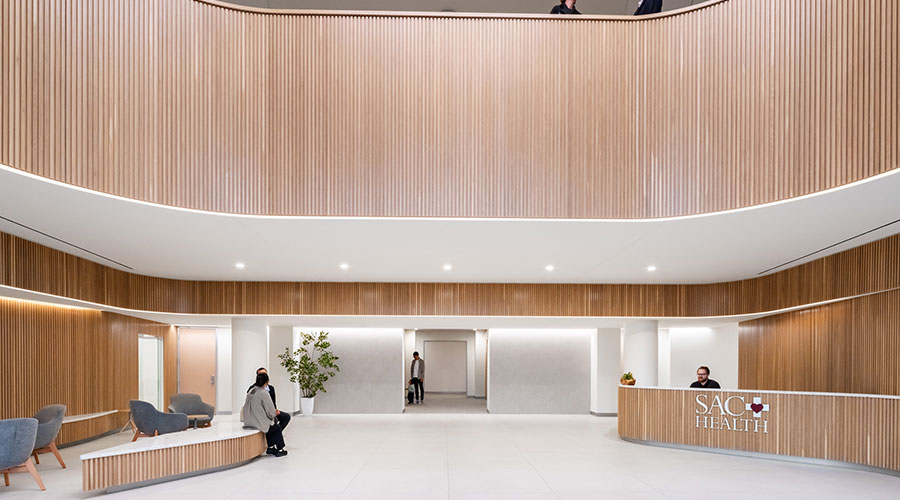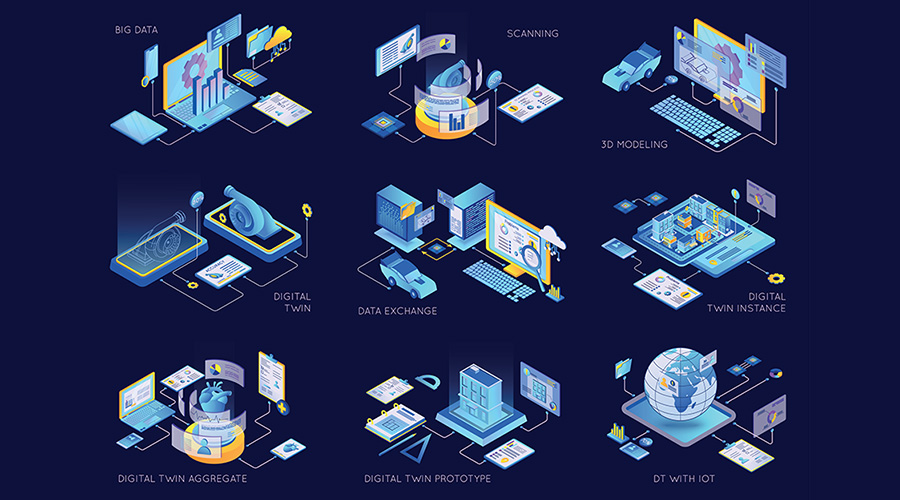Software That Shares
Managers wrestle with the issue of specifying and implementing
CMMS that successfully integrate with applications elsewhere in facilities
Not that long ago, few people outside of maintenance and engineering departments showed much interest in the software that maintenance supervisors and technicians used.
Computerized maintenance management systems (CMMS) were — and are — vital for tracking work orders, gathering data on equipment condition and performance, monitoring the inventory of parts and tools, and a host of other tasks central to any organization’s maintenance mission. But few people took much interest in data related to such issues as equipment repairs, facility conditions and facility energy use.
“People weren’t interested,” says Frank Lucas, technology manager in the facilities management department at the University of Nevada-Las Vegas (UNLV), adding that maintenance departments gathered the information largely for their own purposes. “We had the data arranged we wanted it.”
How Times Have Changed
Today, the ability of a CMMS to integrate with other business software and share its data throughout an organization is among the highest priorities for managers specifying a new CMMS.
Software integration “was virtually at the top of our list,” says Randall Walsh, a manager in the physical planning and facilities management department at California State University Long Beach, which implemented a new CMMS four years ago. The chairman of the committee leading the search for a new CMMS oversaw a large number of departments, so as a result, he wanted software that could share its data easily with other existing software, Walsh says.
What Sharing Means
Increasingly, today’s CMMS must be able to efficiently and effectively gather, sort, store and present the data they contain. Requests for that data often come from a variety of sources located throughout an organization.
In some cases, departments have been asked to share discreet slices of data within their own walls. At UNLV, the 300-person facilities management department includes maintenance, planning and construction, environmental health and safety, custodial, and grounds operations. The ability to separate and share only relevant pieces of data with each group is important, Lucas says.
“We wanted the ability to partition the data so that one department can’t see the other department’s data,” he says.
In a growing number of cases, building occupants want the ability to track the status of their work orders, so a CMMS must be able to display data related to a particular work order anywhere in the work cycle, such as when work is set to start and how long it is projected to take.
Some CMMS take this function a step further by automatically generating e-mails notifying customers about the status of a work order.
A growing number of departments within an organization also want to access to CMMS data, particularly the data relating to personnel issues, accounting, purchasing and materials management.
In some organizations, the need for data residing in CMMS addresses a specific need. The year-old CMMS at UNLV uses a database of buildings and rooms as the basis for scheduling preventive maintenance, among other things. But Lucas says he also has received several requests for that list from different campus groups, such as the department that schedules classes. That department was working from an outdated list and wanted to be able to schedule classes using the most up-to-date and comprehensive list.
“They recognized that our data is probably more accurate,” Lucas says.
Why It’s Good to Share
An overarching benefit from any CMMS upgrade — but especially those upgrades in which software integration is a top priority — should be its ability to strengthen the ties that exist between a maintenance and engineering department and the surrounding organization.
“One thing we wanted to accomplish was to provide better customer service, and then to provide a better work life for our employees,” says Paul Reed Smith, technology manager in the facilities services department at the University of Washington. The department consists of 960 employees who oversee 200 buildings with more than 18 million square feet of maintainable space.
Enhanced data sharing also has the added benefit of helping already overworked departments eliminate the need to enter essential data more than once.
“Any time you re-enter data, you create a greater chance for error,” Lucas says, adding that a common set of data lays the groundwork for greater efficiency within a department and in general.
“If we’re working off the same sheet of music, it means fewer problems,” he says.
Roadblocks to Integration
While data sharing among facilities departments is on the rise in many organizations, roadblocks to integration remain. Not surprisingly, many organizations are squeamish about the security of data and problems that might occur if sensitive data ends up in the wrong place.
“Some of the information we look at is sensitive,” Lucas says. “You don’t want financial information to be broadcast to everybody.”
A related possibility — one tied more to productivity then security — is that software integration and data sharing practices will lead to much information being shared.
“If people are sending information to us, we don’t need to see the intricacies of how they got the information,” Lucas says. “We just need the numbers.” Too much information means the recipient has to wade through data unrelated to the task at hand.
Perhaps the most complex hurdle facing managers who are seeking to enhance data sharing is the cost of programming a CMMS to make the required connections.
“Every time we asked a vendor about integration, they said, yes they can do it,” Lucas says. But if a vendor’s standard package does not have the needed programming to accommodate sharing, managers face a decision over whether to pay to have the vendor make modifications or to have in-house programmers — if they exist — do the work. The former can be expensive, while the latter can be time-consuming and expensive.
Making Sharing Happen
The first step in the process of specifying CMMS that provides the desired level of data sharing and integration is to understand as much as possible about the role that software plays in helping the department operate more efficiently, control costs, and deliver customer satisfaction.
“You need to look at where you want to be in three, five, ten years,” Walsh says. “Your needs now might be only the core component of a CMMS.” A long-term view is essential to success.
“A department needs to begin with the end in mind,” Lucas says.
Another crucial, early step is to determine the structure of the software specification process, including participants. Many organizations involve all levels of the maintenance and engineering department, from managers to front-line technicians. Such levels of inclusion help workers at all levels of the department make their opinions and experience part of the final decision. One challenge here, however, is to involve as many people as is reasonable without making the process cumbersome due to the size of the group.
Smith advises managers to involve an organization’s centralized computer technology management department — if one exists — in the process. Such departments set standards for software specifications, including those for computing platforms, which are essential for ensuring that CMMS can interface with other software.
“Their job is to make sure standards are set, and if you adhere to the standards, you’ll have an easier go of making sure all software can talk to each other,” Smith says.
The relationship between the specifier and the CMMS vendor is among the most complex elements in the specification process, so managers should approach it carefully.
“If you see a vendor you like, you could do a lot worse than build the RFP around them,” Smith says, but he adds that involving more vendors helps keep the specifier’s options open. Managers also should investigate the entire scope of the vendor’s business.
“You need to determine whether the CMMS is just one part of the larger corporate strategy” for the vendor, Lucas says. If so, the vendor might find it easy to neglect the CMMS in favor of other parts of its operation.
“Find a company who is committed to CMMS and maintenance management technology,” he says.
The inevitable spread of technology throughout organizations makes it likely that most if not all departments soon will have the ability to gather, analyze and share date via software applications and databases. Managers who put this CMMS function high on their list of priorities during the specification process are more apt to stay ahead of the curve.
Related Topics:











